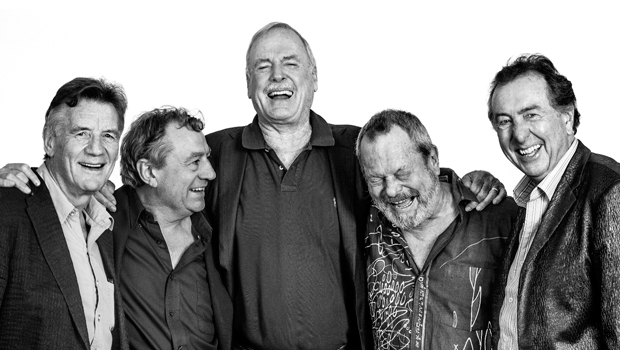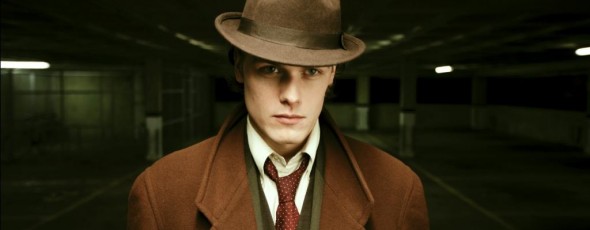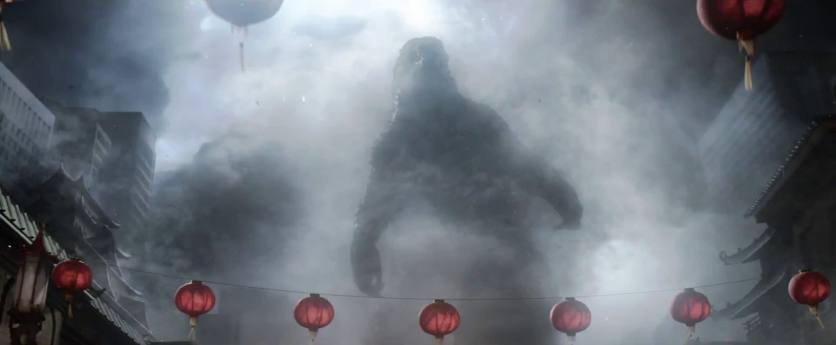
When I was about fourteen or thereabouts, my best friend was a kid named Kurt Stephensen, who lived a couple doors up the street from me. I suspect this convenient proximity was the major reason we became friends in the first place, but no matter… we shared a lot of good times at a fairly pivotal age, the time when we’re most open to discovering and adopting new tastes. While I can’t speak to any influence I might have had on him, I know he contributed a great deal to my developing aesthetic, particularly in the areas of music and comedy.
I don’t recall which of us was the first to become seriously obsessed with comedy as a thing, a fandom, to use a modern term that didn’t exist when I was fourteen. Possibly we came to that place independently, and our mutual interest in it was one of the things we bonded over. But however it happened, there was a period when Kurt and I collected and swapped comedy routines like other kids collected baseball cards or comic books. George Carlin, Eddie Murphy, Richard Pryor, and Robin Williams were our heroes, their records and VHS concert tapes our totems. They were our mentors in wordplay, attitude, and innuendo, our spirit-guides to the often baffling adult world we were still grappling to fully comprehend, and frankly they were our relief valves, too. Their irreverent voices and funhouse-mirror perspectives — not to mention their naughtiness and outright vulgarity — were a transgressive antidote to the alienation we often felt growing up in buttoned-down, uptight Mormon Utah.
And then there was… Monty Python.
Kurt was very definitely the one who introduced me to the seminal British comedy troupe. I’d never heard of them; in fact, my ignorance of them was so complete that the first time he mentioned their name, I asked, “Who the hell is he?,” mistakenly believing this Monty person to be a single individual. My familiarity with British comedy at the time consisted of Benny Hill and a couple of decade-old sitcoms that were running on our local PBS affiliate, Good Neighbors (a.k.a. The Good Life) and The Fall and Rise of Reginald Perrin (all of which I loved, incidentally). Monty Python’s Flying Circus was on PBS as well (very late at night, I might add!), and at Kurt’s urging, I checked it out.
Honestly, I didn’t know what to make of the show at first. I’m not ashamed to admit that I flat-out didn’t understand much of it. Many sketches didn’t strike me as funny so much as just plain weird. But the bits that connected… oh, those were good. And the Python movies — Monty Python and the Holy Grail, Life of Brian, and Monty Python’s The Meaning of Life — were much better, in my opinion, especially Holy Grail, which still has the power to reduce me to tears. Gradually, with time, repeated viewings, and a deepening grasp of British history and culture (not to mention my own), I too became a Python fan… although nothing they’ve done has ever made me laugh quite as hard as the time my old buddy Kurt, with a wickedly mischievous gleam in his eye, recited Eric Idle’s “Penis Song” verbatim.
I’ve been reminiscing about those days with Kurt a lot this week, ever since Sunday afternoon when Anne and I saw Monty Python Live (Mostly), the last of 10 on-stage performances the surviving Pythons delivered this month in London. No, we didn’t hop a plane and go to London in person (although that would’ve been awesome); the show was broadcast in real time to movie theaters all across the globe, so we were able to see it from the comfort of our regular cinema in suburban Utah, which is pretty awesome itself, when you think about it. And more than a little absurd, too. Our species has devised this amazing 21st-century communications technology that enables us to beam a high-definition video signal around the world, and we’re using it to watch 70-something-year-old comedians perform 45-year-old material. Absurd indeed!
As you may have gathered, Live (Mostly) was essentially a medley of greatest hits from the old Flying Circus program. Some of them updated to be a bit more current — for example, the aforementioned “Penis Song” now has new verses that celebrate the female genitalia as well — and the whole thing was stitched together by video clips from the old days and song-and-dance numbers performed by sexy young people. While many reviewers cast a jaundiced eye on the show, complaining that the Pythons were cynically rehashing the same old stuff to make a fast buck off nostalgic fans, I saw it as more a celebration of their legacy. Yes, the guys are old now, a long way from the peak of their powers (a line of 20 dancers performed John Cleese’s “Ministry of Silly Walks” moves, presumably because he no longer can). And yes, they blew their lines from time to time. And I can’t deny there was something ridiculous about seeing these antiquated duffers performing some of this material (John Cleese in drag was never a pretty sight, and it’s far worse now, while Eric Idle’s nudge-nudge-wink-wink routine is… odd… coming from a geezer). But there was also a pleasant warmth underpinning the proceedings, and my overall impression was that they were really enjoying working together again. My understanding is that the Pythons have had rocky personal relationships over the years, and there were rumors going into this show that they never got along and never liked each other, but you wouldn’t have known from the energy they were radiating on this stage. In particular, Cleese and Michael Palin — my favorites of the bunch, for what it’s worth — had the easy fellowship of people who’ve been through thick and thin and come out the other side with a shared wisdom and affection for each other.
A number of surprise guest appearances, from Stephen Hawking to Warwick Davis, enlivened the show, and even the late Graham Chapman, the sixth Python, who died way back in 1989, was present in the form of video clips from the old days. Of the five surviving Pythons, Eric Idle was the most polished, which is no surprise as he’s been more or less constantly immersed in the old material for years, between his solo tours (Anne and I saw him in person a few years back) and his adaptation of Holy Grail into a musical stage show, Spamalot!. Michael Palin retains his boyish demeanor and energy, but occasionally seemed a little flustered, especially during his signature “Spanish Inquisition” sketch. (Honestly, though, that one always had a manic air to it; it’s really not one of my favorite Python routines.) Terry Gilliam seemed rather uncomfortable being in the spotlight after many years behind the camera as a film director, but then, his contributions always were primarily behind the scenes anyhow. (He was the animator behind all the warped little interstitials that have always been a Python trademark.)
It was Cleese and Terry Jones who appeared the creakiest to my eye, and they were the ones who notably blew their lines a few times (causing Cleese to ask “Where were we?” to an uproarious response). But this show wasn’t about getting the lines right; I daresay the audience knows them better than the Pythons at this point anyhow. This show was about seeing the band together again, for one last time. (Supposedly this was the final time the Pythons ever plan to perform together.) Even Carol Cleveland, the so-called “Python girl” who appeared in so many of their classic sketches and, most memorably, played Zoot, the sexy nun who menaces the chaste Sir Galahad in Holy Grail, showed up to do her parts. (She still has fabulous legs!)
In the end, Live (Mostly) was like a family reunion. Hearing “The Lumberjack Song” and “Spam” and “The Dead Parrot Sketch” for the umpteenth time was pleasurable not because of the material itself, but — like those stories of our parents’ first meeting, or Uncle Joe’s war exploits — because we find value in the ritual of telling the familiar old stories, and of spending time with the tellers. And when the show wrapped up with a bittersweet rendition of the song “Always Look on the Bright Side of Life,” I was both smiling and a bit teary-eyed. It felt like Anne and I had witnessed something truly historic… the end of an era. The last opportunity we’d ever have to re-enact that ritual. I’m glad we chose to take it.
It’s been a long journey from my old buddy Kurt’s basement…











